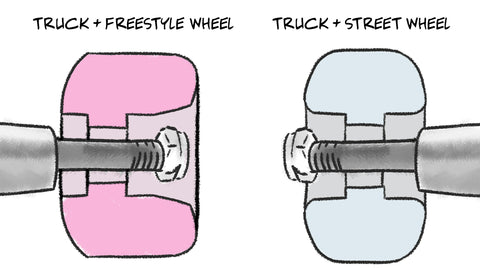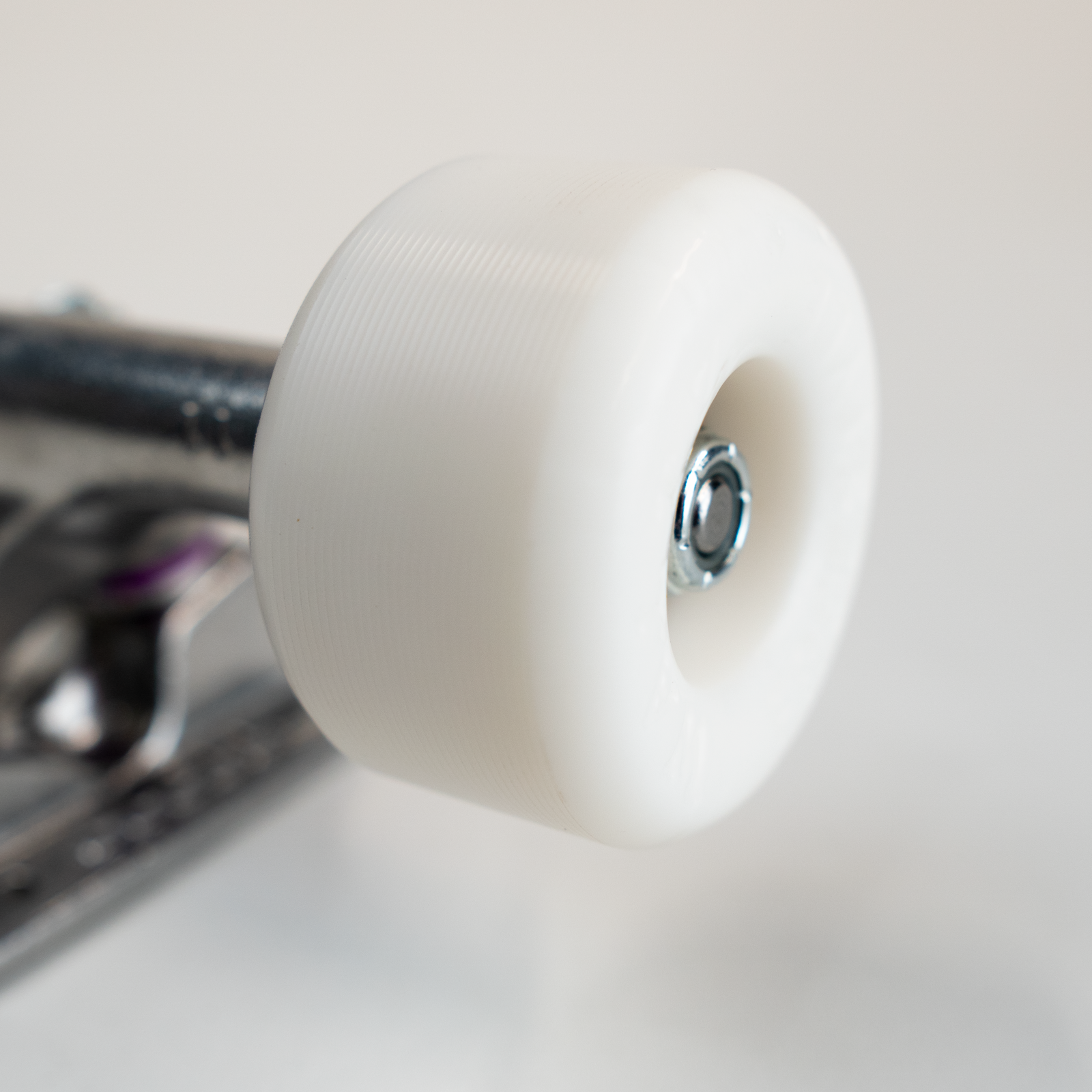Wheels are THE MOST IMPORTANT component of a skateboard. Take them off and see how far you get. Freestyle skateboarding takes things to a new level by challenging the rider to use every inch of their wheels while skating. Freestyle skateboard wheels feature many different shapes and hardnesses (durometers) to help make your board more stable, easier to flip, and to extend the life of your board.

Offset Freestyle Wheels vs. Center Set Street Wheels
Each skateboard wheel holds two bearings. Depending on how the wheel was designed, the bearings will be seated in the center of the wheel, or offset to one side of the wheel.
Center Set Wheels - If the bearings are meant to sit in the center of the wheel, the wheel is considered "center set". Most wheels for street skating are center set.
Offset Wheels - In some wheels, bearings sit slightly closer to one side of the wheel. In this case, we say the bearings are offset to one side, or we simply say that the wheel is ”offset”. Wheels for freestyle skateboarding are offset.
Axle Coverage
In addition to being offset, wheels for freestyle skateboarding should be wide enough to cover the end of the truck axle. This makes a skateboard more stable during rail stands (aka. primos) and helps protect the truck axle from wear.
The Freestyle Truck + Wheel Rule
If you are using freestyle wheels for the first time, it's important to also use trucks that are one size smaller than the deck your are riding. For example, if you ride a 7.25" deck, use trucks that are roughly 7.0" wide.
Waltz freestyle wheels stick out past the end of the truck axle and add roughly 0.25" to the combined width of your trucks and wheels. If your trucks and wheels have a total width of 7.5" and your deck has a width of 7.25", your board will be very unstable during rail stands (aka. primos). It will also look like a monster truck... which is cool if you like monster trucks but... um... no thanks.
Wheel Shapes
Freestyle skateboarding wheels come in a variety of shapes and sizes. Some shapes offer more stability in rail stand (primo) while others are easier to flip or slide. Most freestyle skateboarding wheels feature a radial or square shape.
Radial Wheels - Radial freestyle wheels feature a rounded outer edge or dome shaped profile. This shape makes wheels slightly lighter and easier to flip. Radial wheels are less stable during rail stands and primo slides.
Square Wheels - Some freestyle skateboard wheels feature a square profile and deep, V-shaped recess on one side. This square profile provides maximum stability during rail stands (primos). Unfortunately, this also makes it difficult to roll the board over onto its rail. Square shaped wheels also tend to be slightly heavier than radial wheels.
Hybrid shapes - Many wheels fall somewhere in between a radial and square shape. The Deep Dish and XL Deep Dish shapes from Waltz Skateboarding offer the stability of a square shaped wheel with a slight radius for greater responsiveness.
Durometers (Hardness)
Freestyle skateboarding can be done anywhere! All you need is a piece of flatground and a skateboard. To hone your skills, you should choose a wheel durometer that best suits the surface on which you're skating.
Durometer - a standardized way to measure the hardness of materials like urethane. Skateboard wheels are available in durometers between 75A and 101A.
Hard Wheels (99-100A) - Higher durometer wheels are fast, slide easily, and tend to last longer than softer wheels. Hard wheels also maintain their speed better during coconut wheelies. If you plan to skate on smooth, grippy surfaces like tennis courts and basketball courts, we recommend harder wheels.
Soft Wheels (75-97A) - Lower durometer wheels are grippy and roll more easily over rough terrain. Soft freestyle wheels are a great choice for anyone who skates on rough asphalt and concrete. They also provide more control when skating slippery surfaces like polished concrete and marble.

